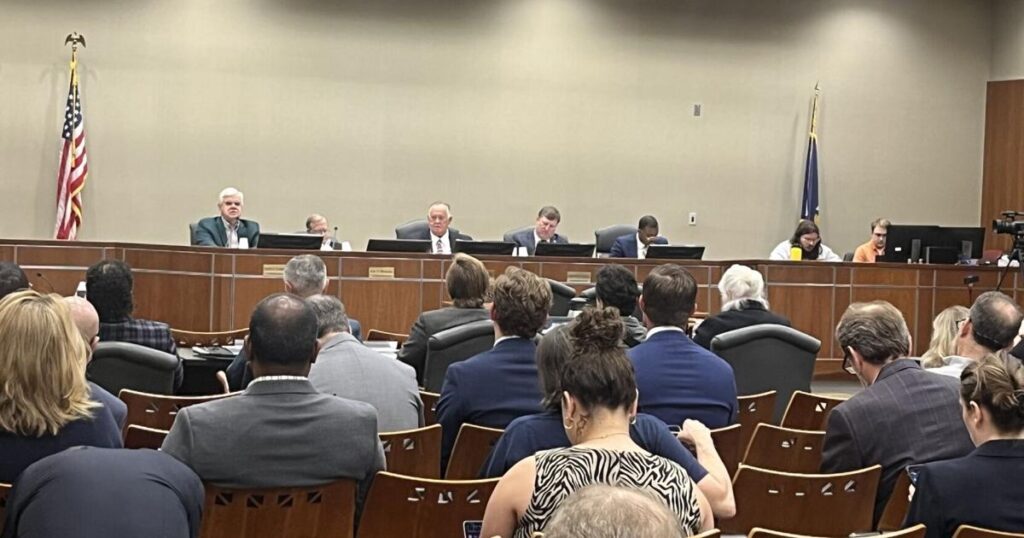(The Center Square) — When Mary Anne Mushatt, a New Orleans resident living in a house heated by natural gas, went before the Louisiana Public Service Commission to express her grievances with the upgrades to her home provided by Entergy, she was revealing herself as one of many casualties of the current statewide energy efficiency program.
Were Mushatt living in the Northshore, she might have received the upgrades she was looking for. But Mushatt lives in New Orleans, where most homes are heated by natural gas and where Entergy is the exclusive energy provider. She is thus unable to secure the upgrades her neighbors on the Northshore can. Why?
The short answer lies in the rebates offered by utilities to certain customers. Energy efficiency contractors servicing homes in the Northshore are able to take advantage of more business-friendly rebates, unlike in New Orleans, where the rebates for gas heated homes are significantly lower.
A rebate is a partial refund or payment made to a homeowner after they complete an energy efficiency upgrade, such as insulation or air sealing.
For instance, a gas heated home serviced by Entergy can secure a rebate of only 20 cents per square foot. A gas heated home serviced by Cleco offers 60 cents per square foot. So, the Cleco homeowner with gas heat sees a generous rebate — $600 for 1,000 square feet of insulation. But the homeowner with Entergy gets a different offer of $200 for the same work.
Accordingly, contractors in New Orleans are less likely to take on these jobs, leaving residents like Mushatt without the help they need.
“We’re signed up and approved with Entergy for this year’s program,” said Jim Clarke in an interview with The Center Square. “We just don’t service any Entergy houses at this point, because we’re not interested.”
Clarke is the founder of Asyndant Energy, an efficiency company that provides upgrades like blower door testing and air sealing.
“Cleco’s program allows us to service any house on the Northshore, as opposed to searching for electric heated homes like in Baton Rouge,” Clarke said.
For contractors who rely on these rebates, the decision is clear. Jobs in electrically heated homes are far more profitable.
Still, whether you’re in the Northshore or in New Orleans, both homeowners will pay the same 1.5% to fund the program. Yet, one benefits far more than the other.
Now, Entergy customers and efficiency contractors are able to get favorable rebates for other types of upgrades, such as air sealing for an electric heated home, or duct sealing electric heated home. These upgrades essentially insure that the cool air stays in your house, meaning less energy use over time.
And contractors will service these homes and customers will get upgrades that truly make a difference, unlike Mushatt, who said that contractors provided her with only lightbulbs and a faucet aerator.
“That was their concept of helping,” Mushatt continued.
Those people who came to Mushatts’ house were APTIM contractors, the third-party administrator that runs Entergy’s efficiency program, as well as the state’s statewide program. Last week, the LSPC delayed a vote that would have paused the energy efficiency program. The next hearing is scheduled for May 21.
Currently, utility companies that don’t have their own in-house program are required to sign onto the statewide program.
Aside from the 1.5% that ratepayers pay into the program, they are also paying for an additional burden that isn’t being paid by Cleco customers, the administrative burden.
“Cleco has a CEO, a board of directors, officers, engineers, lower level managers, and then they have a group of six people that run the entire energy efficiency program,” Clarke said. “Entergy has a CEO, a board of directors, officers, engineers, lower level managers, employees. But Entergy decided to hire an additional company that has a CEO, board of directors, officers, engineers, managers and employees to run their program.”
That additional company is the third-party administrator, APTIM, which is the current statewide energy efficiency contractor. So, that 1.5% that every Entergy customer, perhaps unknowingly, pays into the energy efficiency program without benefits.
Instead, it is going to the third party administrator that was hired by Entergy. And while that TPA has to pay contractors to perform upgrades, they also have to pay employees, their own utilities, office supplies and the rest of the expenses that any business must endure.
“If the TPA is responsible for marketing and getting the customers, it’s going to take them years to get traction. Whereas, Cleco and Entergy have built brands,” Clarke said.
These administrative costs directly impact the rebates utilities can offer.
“They get the budget at the beginning of the year. They know how much money they’re going to spend, how much they have to spend,” Clarke said. “They take the salaries of the administration, quality control people out of it. They take the 4% out of it for Evaluation, Measurement, and Verification, they take some of it out for marketing, and for whatever is left, each different rebate has a savings model that they apply to find out what the rebates can be in each different measure.”
Before Entergy determines how much they can pay out in rebates, they first deduct the costs of administration, oversight, and marketing. That leaves less money available to go toward actual efficiency upgrades.
Cleco, with its leaner, in-house model, can put a larger share of its efficiency budget into direct rebates, whereas Entergy customers are paying into a system with more layers of bureaucracy.
“The exact problems that I mentioned will exist statewide, instead of just with current energy customers,” Clarke said.
And unless there is a significant change in how these programs are administered, ratepayers may continue to see less return on their investment in energy efficiency.


